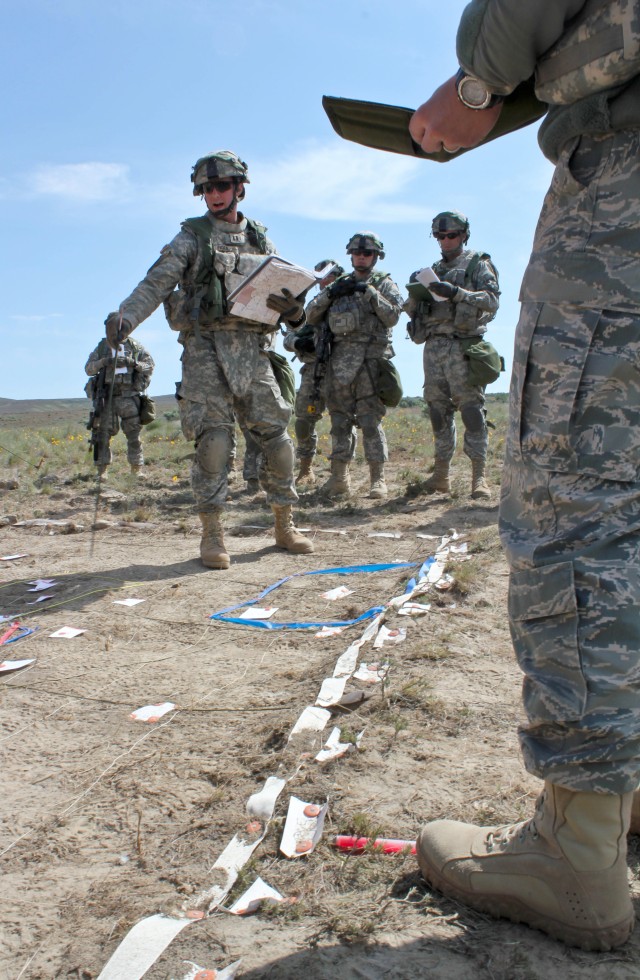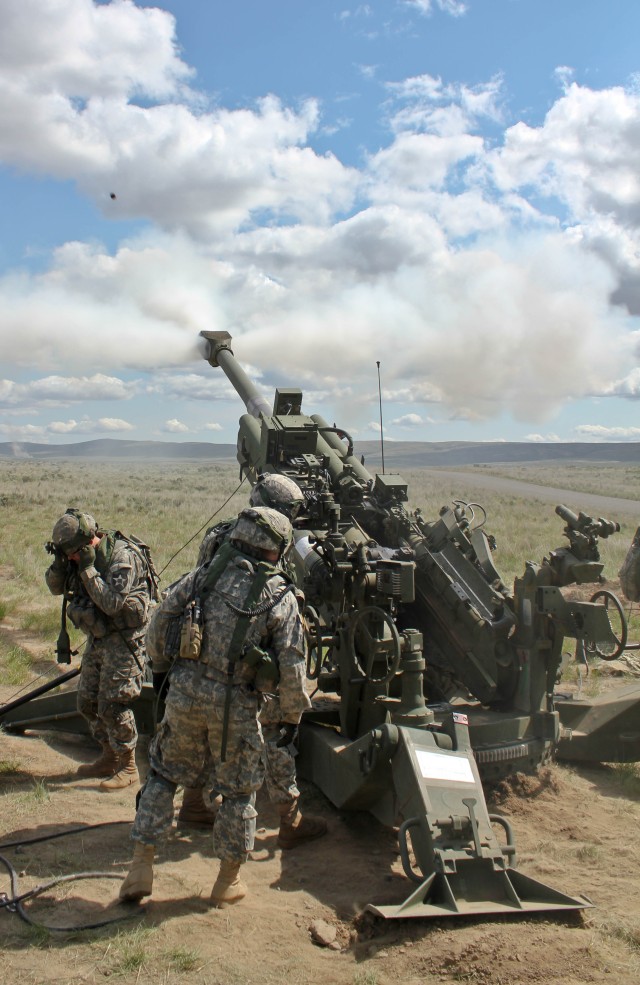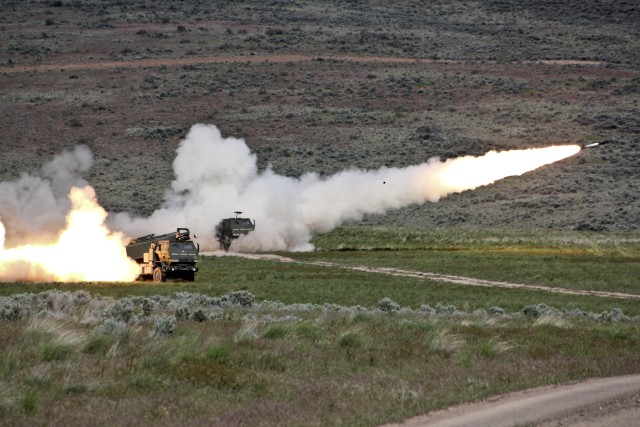YAKIMA TRAINING CENTER, Wash.-Commanders of 3rd Stryker Brigade Combat Team, 2nd Infantry Division composed a symphony of rockets, mortars, artillery and bullets during a fire coordination exercise at Yakima Training Center May 22.
"It\'s kind of a ballet of fire and steel, coordinating the different assets to ultimately help out those guys on the ground getting shot at by the bad guys," said Sgt. 1st Class Jaime C. Spencer, platoon sergeant of mortar platoon, Headquarters and Headquarters Company, 2nd Battalion, 3rd Infantry Regiment, 3-2 SBCT.
The purpose of the FCX was to provide a live-fire training environment for commanders to practice the necessary steps of working multiple fire support elements safely and concisely.
"What an FCX does is teach leaders how to coordinate all the fires that are available to them on a modern battlefield into one central location. You have to understand how all of those systems work in the same space in order to get those effects into one single location," said Col. Charles R. Webster, brigade commander, 3-2 SBCT.
The exercise included fire support from 155mm Mortar systems, M-777 Howitzer Artillery Cannons, High-Mobility Artillery Rocket Systems and Air Force and Army aviation.
"The more that I work with them the more confident I am in how quickly they can get rounds to the target and we've had a lot of fun seeing the artillery shooting and the mortars and the HIMARs and all that stuff," said Cpt. Andrew Figer, troop commander, B Troop, 1st Squadron, 14th Cavalry Regiment, 3-2 SBCT.
The intent of it was to run several missions under the authority of different commanders for a span of 3-4 days. They were required to determine what sort of support by fire to request based on the reports they received, give direction to each support element and to ensure that the elements were not firing on each other.
"What we are doing is training the leadership so that we are comfortable using the radios and talking with these people and coordinating all these different moving pieces," said Figer. "It's really important for us because we don't do it on a daily basis and when we deploy and go into combat we need to understand how to do this. The first time you do something you don't want it to be in combat that's the reason why we train.
It also provided each support element the opportunity to train on proficiency in their mission and equipment by timely and accurately responding to requests and providing support-by-fire.
"Ultimately it goes to those guys on the ground, those soldiers sitting there in contact. It's a good feeling to know that you are able to support those guys and help them out when they really need indirect fire the most," said Spencer.
The training was conducted in support of the Arrowhead brigade's exercise designed to prepare them to perform full-spectrum operations at the National Training Center in hopes of becoming the first FSO-certified Stryker brigade.
"It's a very important opportunity for them to get back into and understand how to fight on the full spectrum of our war-fighting," said Webster.
The FCX provided a realistic, earth-rattling experience for each participant and proved how crucial cooperation and coordination from different war-fighting elements are to operational success.










Social Sharing